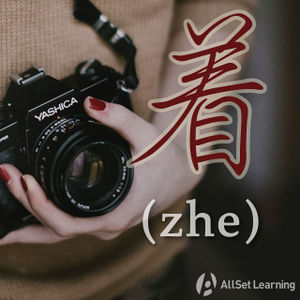Difference between revisions of "Alternative existential sentences"
| Line 27: | Line 27: | ||
== Existential Sentences with 是 == | == Existential Sentences with 是 == | ||
| − | + | 是可以表示对一种存在的判断,主语必须是表示方位或处所意义的词语, | |
| − | |||
=== Structure === | === Structure === | ||
| Line 34: | Line 33: | ||
<div class="jiegou"> | <div class="jiegou"> | ||
| − | + | Location Word + Verb + 是 + [Noun Phrase] | |
</div> | </div> | ||
| Line 42: | Line 41: | ||
<div class="liju"> | <div class="liju"> | ||
| − | * 洗衣机 里 <em>是</em> 一些 | + | *洗衣机 里 <em>是</em> 一些 脏 衣服 。<span class="pinyin">Xǐyījī lǐ <em>shì</em> yīxiē zāng yīfu.</span><span class="trans">Inside the washing machine are some dirty clothes.</span> |
| − | * | + | *袋子 里 <em>是</em> 我 的 午饭 。<span class="trans">There is my lunch in the bag.</span> |
| + | *墙 上 都 <em>是</em> 他 家人 的 照片 。<span class="trans">On the wall are all his family's pictures. | ||
| + | *行李箱 里 <em>是</em> 我 给 朋友 买 的 礼物 。<span class="trans">In my suitcase are the gifts that I bought for my friends.</span> | ||
| + | *桌子 上 <em>是</em> 孩子 昨天 画 的 画 。<span class="trans">On the desk are the pictures the kids drew yesterday.</span> | ||
</div> | </div> | ||
| − | Note | + | Note that 是 is used to describe a singular, or one object existing somewhere while 有 can refer to multiple objects/ people. |
==See Also== | ==See Also== | ||
Revision as of 03:59, 6 July 2017
| This article is a stub. Editors can help the Chinese Grammar Wiki by expanding it. |
-
Level
-
Similar to
-
Used for
-
Keywords
It's not just 在 and 有 that can be used to form existential sentences, expressing something's existence in a certain place or location. The word order may be a little different from what you are used to, but these are still fairly ways to make everyday statements such as, "there is a book lying on the desk."
Contents
Existential Sentences with 着
Structure
Location Word + Verb + 着/了+ [Noun Phrase]
Examples
- 桌子 上 放 着 一 本 书。There is a book lying on the table.
- 公园 的 椅子 上 坐 着几 个 人。Some people are sitting in the chairs in park.
- 柜子 里 挂 着 一些 衣服。There are some clothes hanging inside the closet.
- 楼下 停 了 几 辆 车 。 A few cars are parking downstairs.
- 锅 里 煮 了 鸡汤 。I made chicken soup in the pot.
Existential Sentences with 是
是可以表示对一种存在的判断,主语必须是表示方位或处所意义的词语,
Structure
Location Word + Verb + 是 + [Noun Phrase]
Examples
- 洗衣机 里 是 一些 脏 衣服 。Inside the washing machine are some dirty clothes.
- 袋子 里 是 我 的 午饭 。There is my lunch in the bag.
- 墙 上 都 是 他 家人 的 照片 。On the wall are all his family's pictures.
- 行李箱 里 是 我 给 朋友 买 的 礼物 。In my suitcase are the gifts that I bought for my friends.
- 桌子 上 是 孩子 昨天 画 的 画 。On the desk are the pictures the kids drew yesterday.
Note that 是 is used to describe a singular, or one object existing somewhere while 有 can refer to multiple objects/ people.
See Also
- Indicating location with "zai" before verbs
- Special cases of "zai" following verbs
- Expressing existence in a place with "zai"
Sources and Further Reading
Books
- Integrated Chinese: Level 1, Part 1 (3rd ed) (p. 128) →buy
- Integrated Chinese: Level 2, Part 1 (p. 191) →buy
- Integrated Chinese: Level 2, Part 2 (pp. 264, 325)→buy
- New Practical Chinese Reader 4 (新实用汉语课本4) (pp. 40-1, 164-5, 185) →buy



